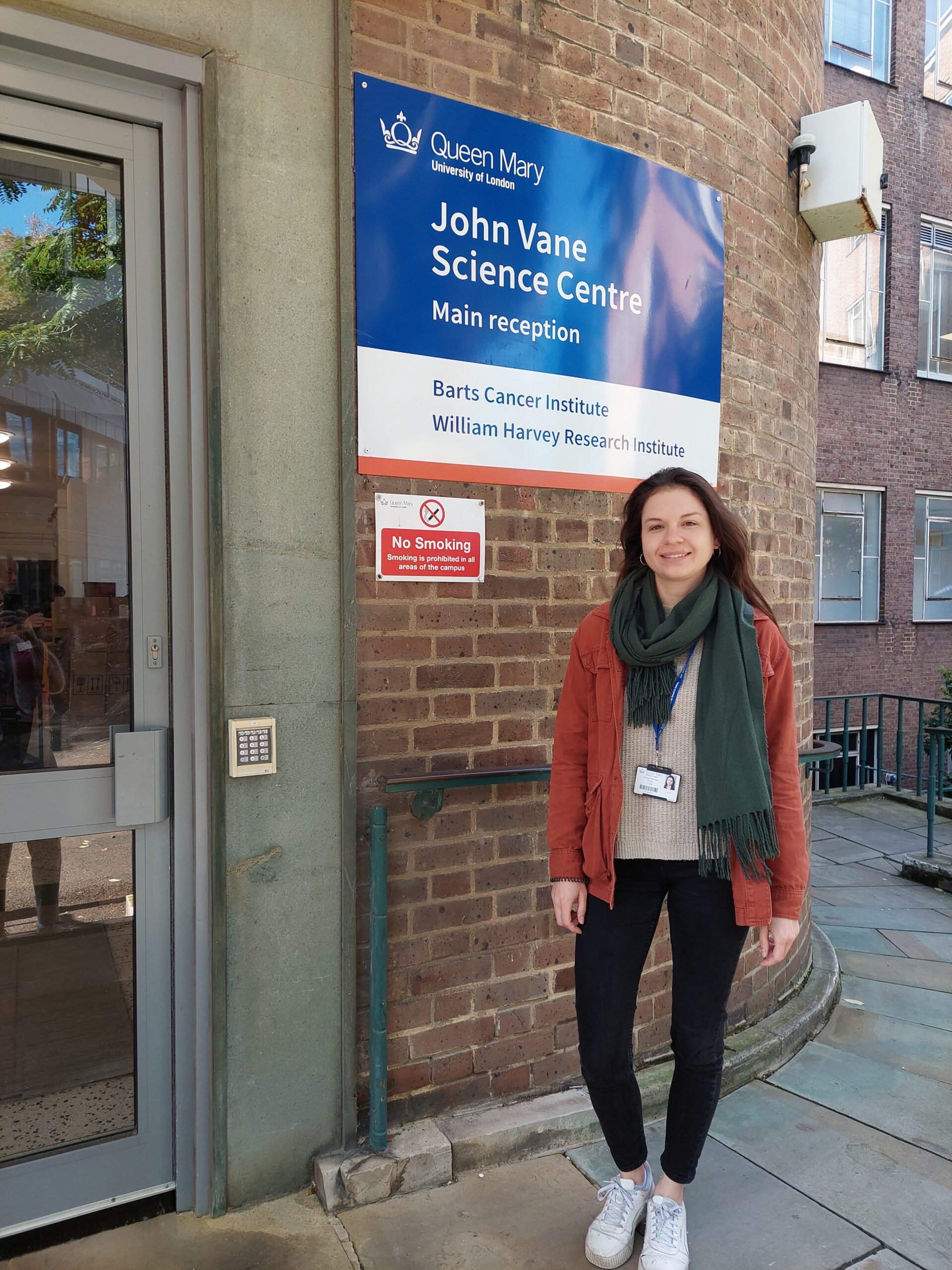As part of her PhD and funded by the SQUEEZE project, Mirjam Dellinger from Medical University of Vienna spent six months at Queen Mary University of London (QMUL) between September 2024 and February 2025. Supervised by Professor Costantino Pitzalis and Felice Rivellese, her exchange focused on a key scientific question in SQUEEZE Work Package 4: how fibroblasts and immune cells interact in the synovium of patients with rheumatoid arthritis (RA).
“I was warmly welcomed, excellently supported, and I truly learned a lot,” Mirjam shared during her presentation at the latest SQUEEZE General Assembly meeting.
Advancing Histological and Immunofluorescence Techniques
During her time at QMUL, Mirjam was trained in histology and advanced immunofluorescence multiplexing, enabling her to develop two different staining panels to visualise and investigate co-localisation and interaction of fibroblasts and immune cell subsets. These included myeloid cells (e.g. CD14+ monocytes and CD68+ macrophages) and lymphoid cells (e.g. CD3+ T-cells and CD20+ B-cells), helping to better understand their positioning and potential interactions in the inflamed RA synovium.
The resulting stainings were visually striking and scientifically promising. With support from the QMUL team, she also built an image analysis pipeline using QuPath, which allowed for detection of cells in synovial tissues to analyze their distribution and positioning towards each other. This data is now being used to map how immune cells and fibroblasts are distributed—and interact—in different RA pathotypes.
First Insights into Pathotype-Specific Interactions
Preliminary results from the project revealed exciting trends. One notable finding: monocytes (CD14+) appeared more frequently co-localised with fibroblasts in lympho-myeloid synovial pathotypes than in diffuse-myeloid ones—an observation that may support future biomarker development and stratified treatment approaches. Mature macrophages (CD68+) did not show the same distribution, pointing to cell-type-specific dynamics.
Building Bridges Beyond the Lab
In addition to the technical training and data analysis, Mirjam’s stay created a strong scientific bridge between the Vienna and London teams. Regular research meetings fostered alignment, and techniques learned at QMUL—such as biopsy processing and pathotype scoring—will now be implemented in Vienna.
Moreover, the histology panel developed by Mirjam may soon be integrated into the BIO-TEST trial within SQUEEZE, enabling in-situ analysis of synovial interactions—not just in co-cultures, but directly in patient tissue.
The visit also contributed to one of the project’s broader goals: testing protocols for frozen biopsy sharing, ensuring high-quality sample handling between research centres.
A Mutual Success
Reflecting on the experience, the QMUL team shared their appreciation:
“It was a real pleasure having Mirjam in our department. She made impressive progress, and this exchange is a great example of what large European initiatives like SQUEEZE should promote: hands-on collaboration and mutual learning. With the new techniques Mirjam brings back to Vienna, we’ll be able to move the project forward more quickly and effectively.”
Thank you, Mirjam, for your dedication and contribution—and to both teams in Vienna and London for making this cross-border exchange a success.


